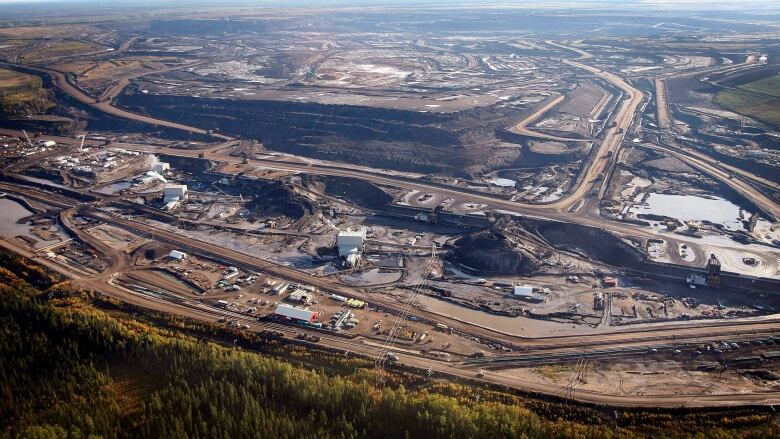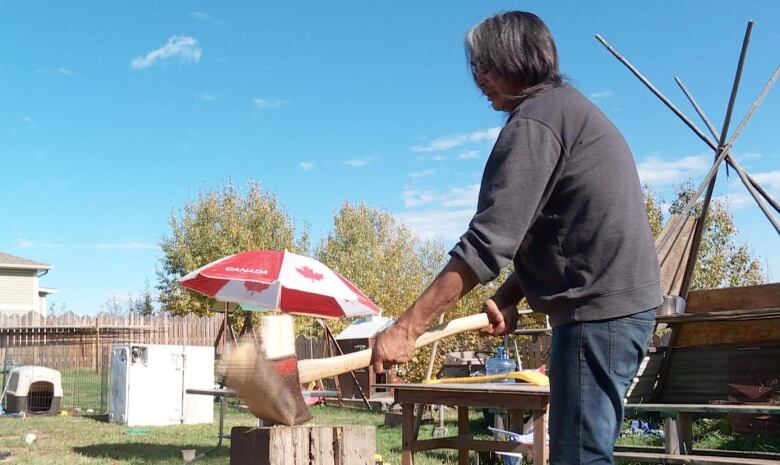Leaders vow to tackle Fort McKay air quality, odour complaints
Community's trust will be gained through demonstrated action, says chief of First Nation

FortMcKayFirst Nation Chief JimBoucherandHealth Minister Sarah Hoffman presented a united front Wednesdayat the release of a new report that outlines 17 recommendations for improving air quality in the Fort McKay region.
Local, provincial and industryleaders said the report signifies the opening of a newchapter in the on-going concerns over air quality on the Fort McKay First Nation, which is surrounded by oilsands operations.
"The release of this report is a key first step in responding to FortMcKay'slong-standing concerns about air quality and odours," Hoffman said.
Boucher said air quality concerns and odour incidentsrelated to industry have occurredsince the 1960s. He said the new report marksthe start of co-operation between the First Nation, the provincial government, and industry.
The report was prepared by the Alberta Energy Regulator and Alberta Health, in partnership with the community and industry. It looked at recurring complaints from Fort McKay residents about air quality and odours in the region.
Long-standing concerns for community of 600
Approximately 600 people live on the First Nation and an adjoining hamlet. Fort McKay is roughly50 kilometres north of Fort McMurray.
Leo Gabriel Desjarlais, ahunter and trapperin Fort McKay, strugglesto describe what it smells like when fumes from the oil sand operations blow into the community.
"Sometimes it smells like horse shit," he said. "Sometimes it smells like burnt plastic."
Whenever the air smells like that he shuts the windows and stays inside.

Desjarlais worries about the impact of the fumes onthe health of the community's most vulnerable.
"I try not to think about it. The only thing that worries me is how this affects my grandkids and the kids around here."
Between January 2010 and December 2014, the Alberta Energy Regulator received 172 complaints from Fort McKay residents, of which 165were related to odours.
There have been numerousefforts to better monitor and address the situation,rangingfrom citizen-led air sampling andjoint federal-provincial environmental monitoring to a provincial monitoring and emissions-limit plan.
The report released Wednesdayrecommends that improvements be made in industrial and ambient air quality monitoring. It calls for an assessment of long-term and cumulative health effects of emissions.
It also recommends that a better understanding be developed of the link between industry emissions and air quality and odours in Fort McKay. It says improvements should be made to response and communications protocols for odour complaints.
Trust needs to be won, chief says
Bouchercautioned, however, that change would not come overnight.
"The trust of the community will be gained through demonstrated action," hesaid.
In 2012, the Fort McKay First Nation pulled out ofthe JointOilsandsMonitoring program, the showpiece federal-provincial effort to monitor environmental change in theoilsands.
David Schindler, a professor emeritus in biological sciences at the University of Alberta who has extensively studied environmental impacts of the oilsands, called the report "a step in the right direction."
"The last time I was on the ground up there about three years ago, we were about (five kilometres) from Fort McKay and about the equivalent from a couple of the big oilsands plants...We were all coughing and our eyes were running and we were looking at each other in disbelief."
That incident was likely ananomalyin the area's air quality, he said. Butwhen oilsands operationsexperience what might becalled an "upset," it can have serious consequences on air quality.
"The next step is to take some action in a timely manner to get rid of the problem," he said. "You have to see if people will act on the report."












_(720p).jpg)


 OFFICIAL HD MUSIC VIDEO.jpg)
.jpg)



























































































